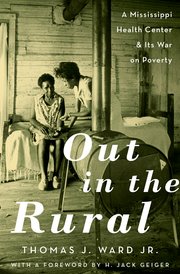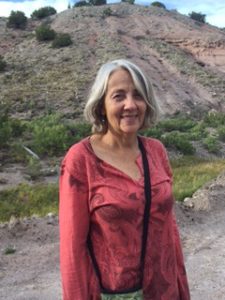Kentucky nurses and their allies seek a mandate for a nurse in every school
– Advocates say move would improve learning outcomes
Putting a full-time nurse in every Kentucky school would not only provide health care, but improve education outcomes, say advocates of the idea.
“We need a nurse in every school because we need to quit thinking about health and education as separate entities, because they are not,” said Eva Stone, an advanced-practice registered nurse and co-chair of the school-nurse initiative being mounted by nurses’ groups and their allies.
One of their strongest allies is retired educator Terry Brooks, executive director of Kentucky Youth Advocates, says he is “absolutely convinced that the non-cognitive issues that kids face, like health, have as much to do with their capacity to learn as a teaching method.”
Brooks added, “There is only so much blood that you can wring out of a turnip when it comes to teaching methods. You always want great teaching methods, but my goodness, we have been working on that for decades with results that are a whole lot more the same than they are different. So if it is not producing significant change, we’ve got to look for something else. . . . You are not hearing me say that this is a silver bullet, that, boy, a school nurse is going to fix everything, but I think the presence of a school nurse not only impacts kids’ health, but it impacts the kids’ capacity to learn.”
Those assertions are supported by research, including a recent study that looked at the association between school nurses and academic outcomes of high-school students. It showed that when there was a nurse in a public high school on a full time, every-day basis, graduation rates were higher, absentee rates were lower and ACT scores were higher,” Teena Darnell, assistant professor of nursing at Bellarmine University, said about her research.
“And traveling nurses showed no significance on any level. So if you had a part-time nurse, there was no significant difference on academic performance,” said Kathy Hager, a Bellarmine nursing professor and president of the Kentucky Nurses Association.
Hager is also a member of the “Every School Needs a Nurse, Every Day” initiative that is advocating mandates for a full-time nurse in every public school, as recommended by the American Academy of Pediatrics.
The National Association of School Nurses supports a ratio of one nurse for every 750 healthy students. This was the recommendation of the pediatrics academy until just last year, when it changed its recommendation to a nurse in every school, saying that “The use of a ratio for workload determination in school nursing is inadequate to fill the increasingly complex health needs of students.”
Kentucky has one nurse for every 1,254 students, according to a 2011 KYA report, the latest data available. The Kentucky Department of Education only records nurses hired by school boards (187 this year) and does not include any hired by different funding streams.
Darnell’s research found that 42 percent of Kentucky’s high schools had a full-time nurse, 37 percent had a part-time nurse and 20 percent of them didn’t have one at all. Among all schools, 44 percent had full-time registered nurses; 48 percent had either RNs or licensed practical nurses.
State law requires schools to “make any necessary arrangement” to provide for the immediate health needs of students. Stone said they “do that for the most part, but . . . there is no system of monitoring in place.”
When a nurse isn’t available, student health services are often provided by school employees who are trained to provide those services. Many students have conditions that need frequent attention.
Out of 655,475 students enrolled in Kentucky’s public schools last year, 20,711 were diagnosed with attention deficit hyperactive disorder, 14,054 with allergies, 55,897 with asthma, 1,142 with Type 1 diabetes and 5,259 with a seizure disorder, according to the KDE.
Vicki Williams, school-health coordinator and one of three school nurses in Calloway County, which has about 3,400 students, said the school system has about 150 employees who have completed medication training, and others who know certain medical procedures, like blood-sugar testing, taking blood pressure and using g-tubes to the stomach.
And though she is allowed to delegate administration of insulin to other employees, Williams said she isn’t comfortable doing that. “That is where I will draw the line,” she said. “I will not train anybody to give insulin except myself and any other licensed nurse in my building.”
She said schools have many distractions and “Too much insulin is life threatening, and I don’t feel comfortable putting that on somebody who has not had more training than a quick diabetes training after school one day.”
Hager didn’t question that unlicensed employees can be trained to provide such services, but said what they don’t have are the assessment skills of a school nurse. “It takes years of experience to recognize what a person looks like with a low blood sugar reaction,” which often occurs with young diabetics, she said.
– Advocates say move would improve learning outcomes
Putting a full-time nurse in every Kentucky school would not only provide health care, but improve education outcomes, say advocates of the idea.
“We need a nurse in every school because we need to quit thinking about health and education as separate entities, because they are not,” said Eva Stone, an advanced-practice registered nurse and co-chair of the school-nurse initiative being mounted by nurses’ groups and their allies.
One of their strongest allies is retired educator Terry Brooks, executive director of Kentucky Youth Advocates, says he is “absolutely convinced that the non-cognitive issues that kids face, like health, have as much to do with their capacity to learn as a teaching method.”
Brooks added, “There is only so much blood that you can wring out of a turnip when it comes to teaching methods. You always want great teaching methods, but my goodness, we have been working on that for decades with results that are a whole lot more the same than they are different. So if it is not producing significant change, we’ve got to look for something else. . . . You are not hearing me say that this is a silver bullet, that, boy, a school nurse is going to fix everything, but I think the presence of a school nurse not only impacts kids’ health, but it impacts the kids’ capacity to learn.”
Those assertions are supported by research, including a recent study that looked at the association between school nurses and academic outcomes of high-school students. It showed that when there was a nurse in a public high school on a full time, every-day basis, graduation rates were higher, absentee rates were lower and ACT scores were higher,” Teena Darnell, assistant professor of nursing at Bellarmine University, said about her research.
“And traveling nurses showed no significance on any level. So if you had a part-time nurse, there was no significant difference on academic performance,” said Kathy Hager, a Bellarmine nursing professor and president of the Kentucky Nurses Association.
Hager is also a member of the “Every School Needs a Nurse, Every Day” initiative that is advocating mandates for a full-time nurse in every public school, as recommended by the American Academy of Pediatrics.
The National Association of School Nurses supports a ratio of one nurse for every 750 healthy students. This was the recommendation of the pediatrics academy until just last year, when it changed its recommendation to a nurse in every school, saying that “The use of a ratio for workload determination in school nursing is inadequate to fill the increasingly complex health needs of students.”
Kentucky has one nurse for every 1,254 students, according to a 2011 KYA report, the latest data available. The Kentucky Department of Education only records nurses hired by school boards (187 this year) and does not include any hired by different funding streams.
Darnell’s research found that 42 percent of Kentucky’s high schools had a full-time nurse, 37 percent had a part-time nurse and 20 percent of them didn’t have one at all. Among all schools, 44 percent had full-time registered nurses; 48 percent had either RNs or licensed practical nurses.
State law requires schools to “make any necessary arrangement” to provide for the immediate health needs of students. Stone said they “do that for the most part, but . . . there is no system of monitoring in place.”
When a nurse isn’t available, student health services are often provided by school employees who are trained to provide those services. Many students have conditions that need frequent attention.
Out of 655,475 students enrolled in Kentucky’s public schools last year, 20,711 were diagnosed with attention deficit hyperactive disorder, 14,054 with allergies, 55,897 with asthma, 1,142 with Type 1 diabetes and 5,259 with a seizure disorder, according to the KDE.
Vicki Williams, school-health coordinator and one of three school nurses in Calloway County, which has about 3,400 students, said the school system has about 150 employees who have completed medication training, and others who know certain medical procedures, like blood-sugar testing, taking blood pressure and using g-tubes to the stomach.
And though she is allowed to delegate administration of insulin to other employees, Williams said she isn’t comfortable doing that. “That is where I will draw the line,” she said. “I will not train anybody to give insulin except myself and any other licensed nurse in my building.”
She said schools have many distractions and “Too much insulin is life threatening, and I don’t feel comfortable putting that on somebody who has not had more training than a quick diabetes training after school one day.”
Hager didn’t question that unlicensed employees can be trained to provide such services, but said what they don’t have are the assessment skills of a school nurse. “It takes years of experience to recognize what a person looks like with a low blood sugar reaction,” which often occurs with young diabetics, she said.






